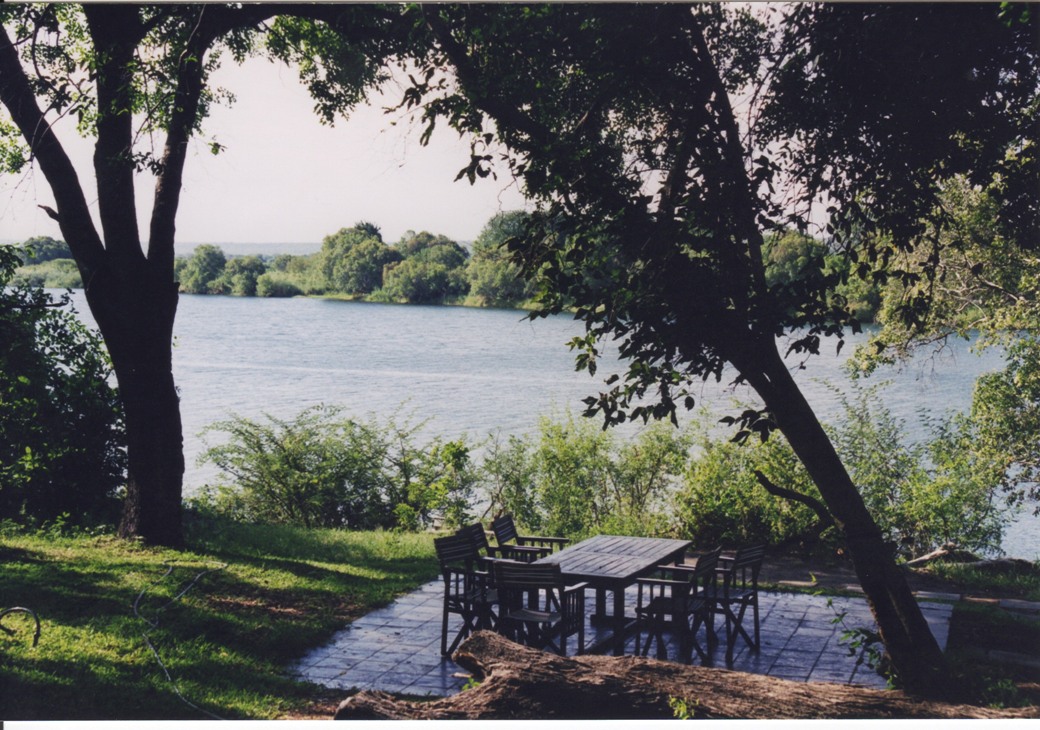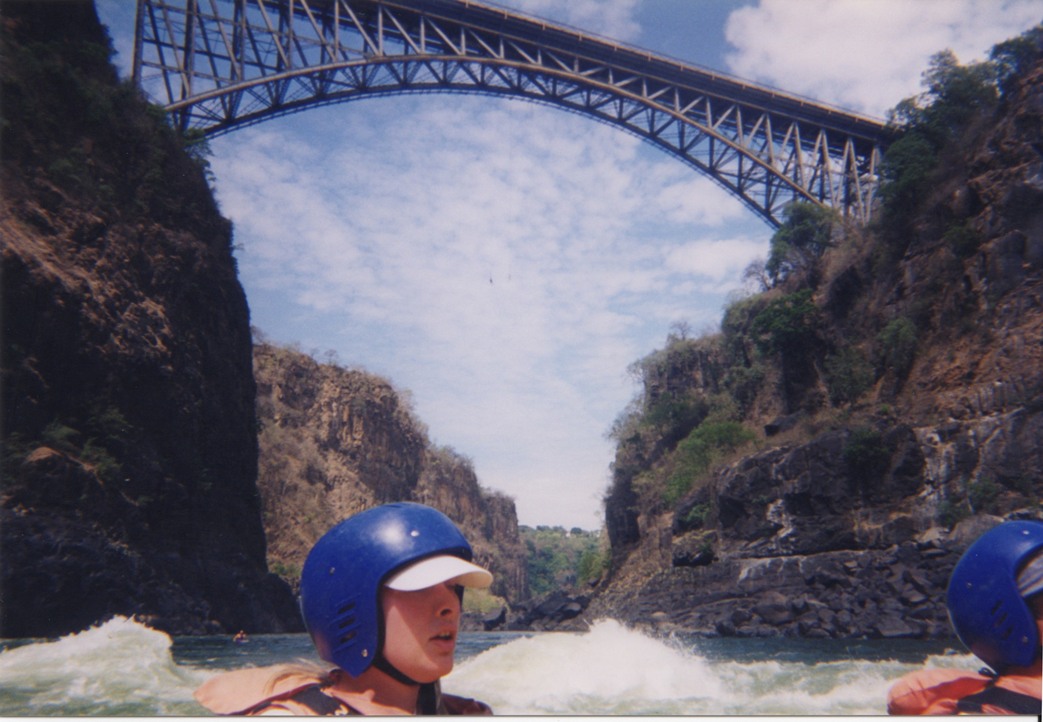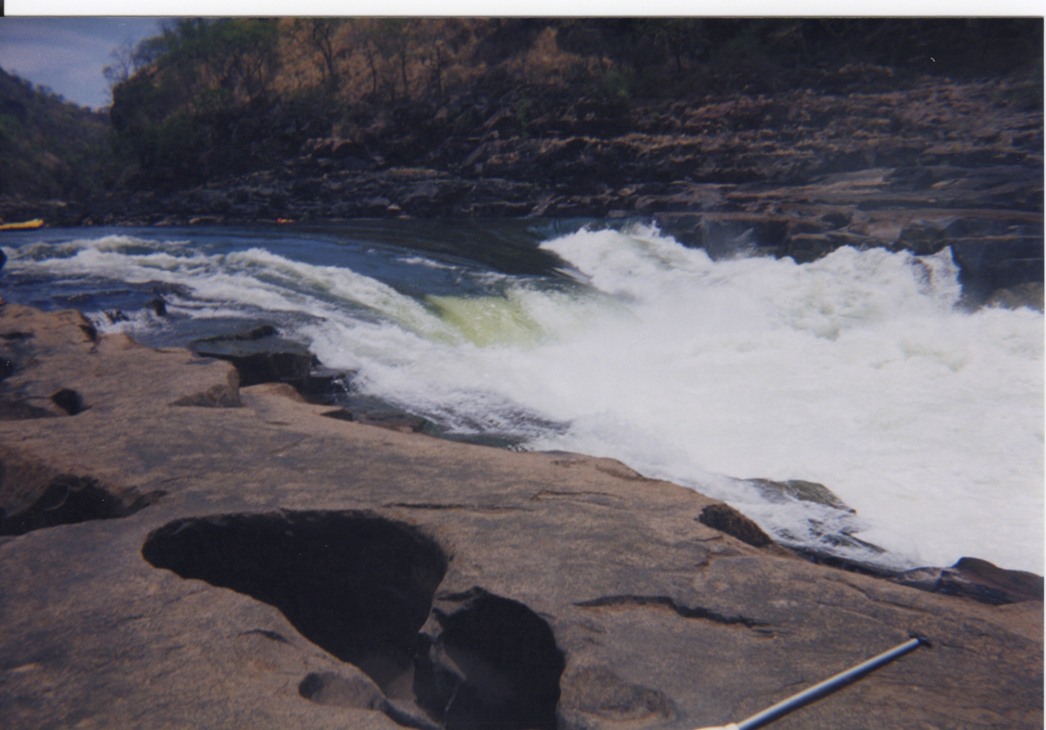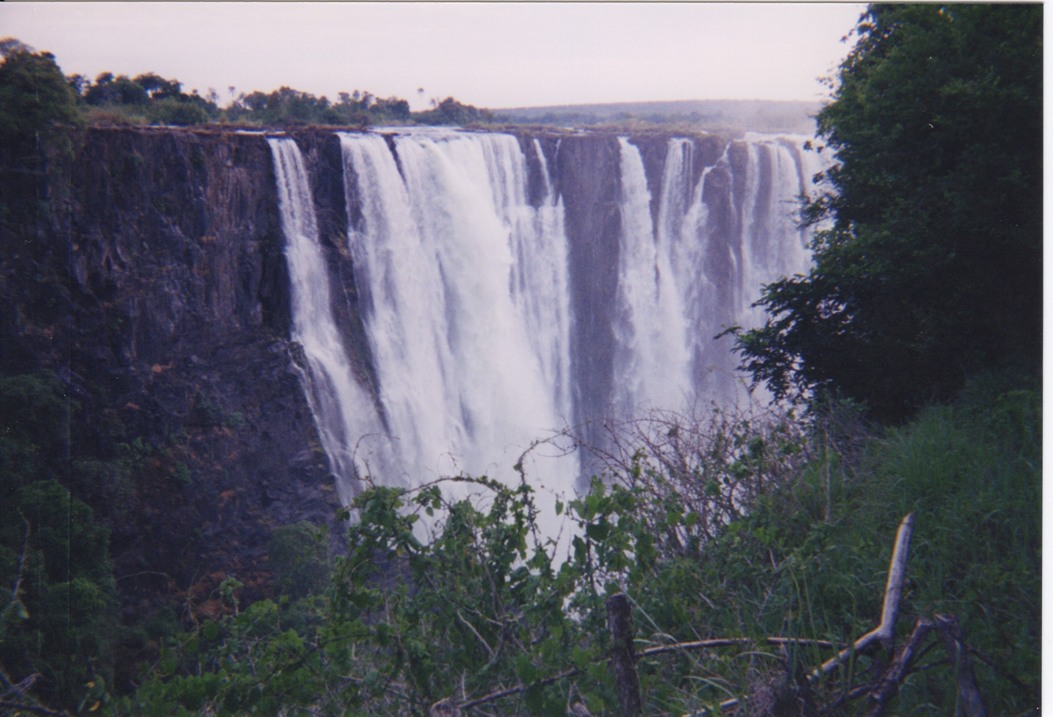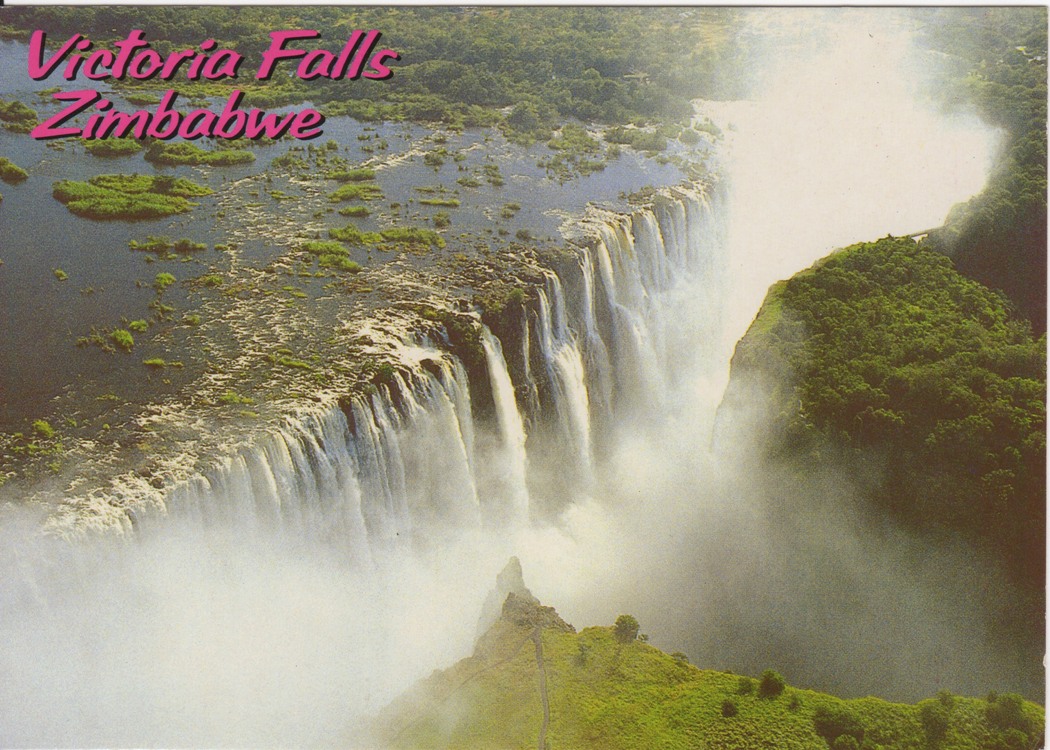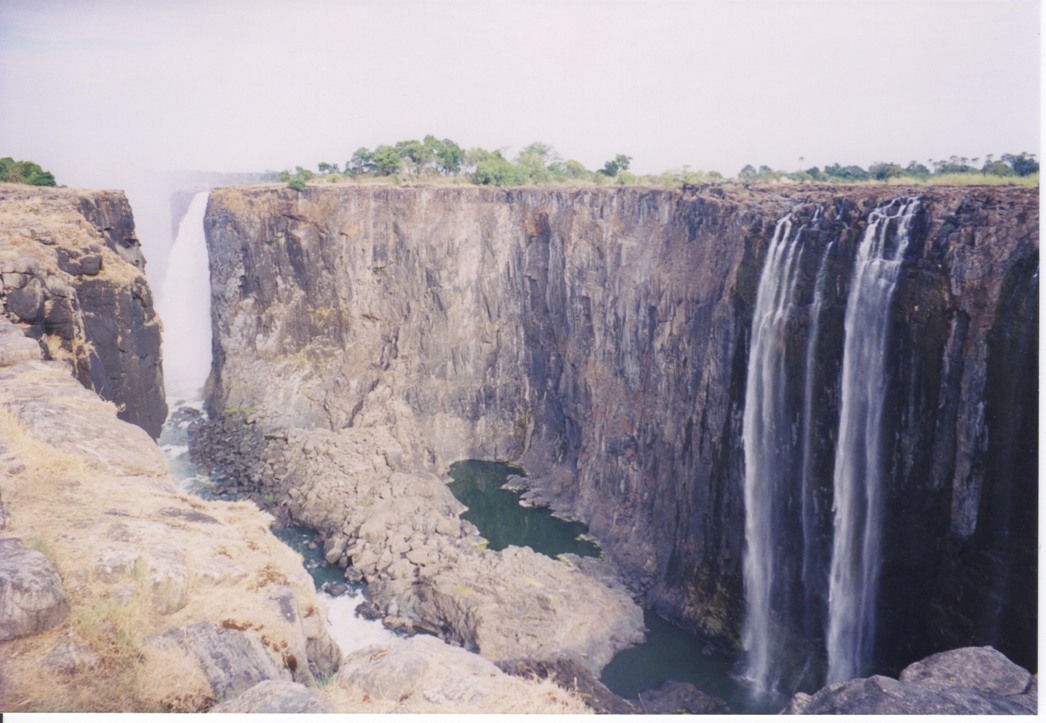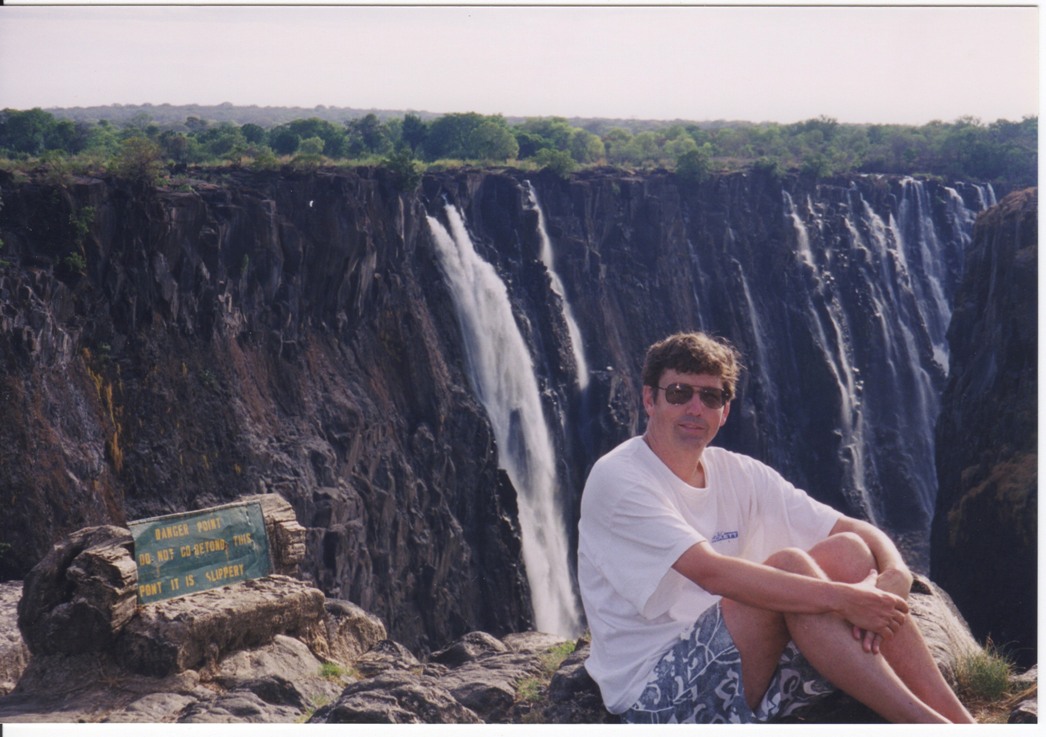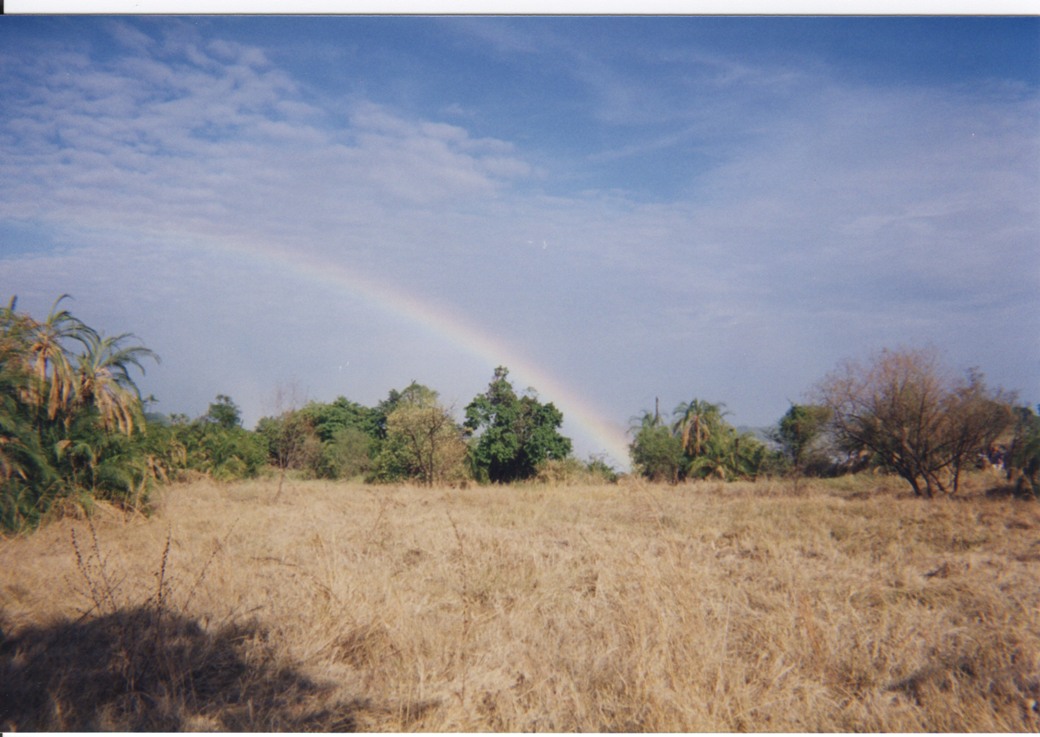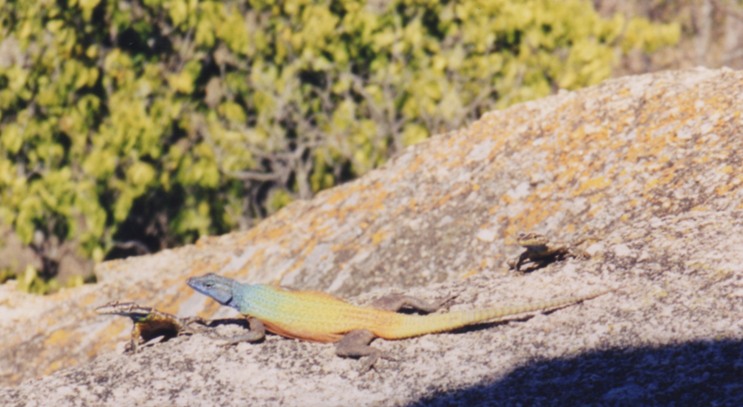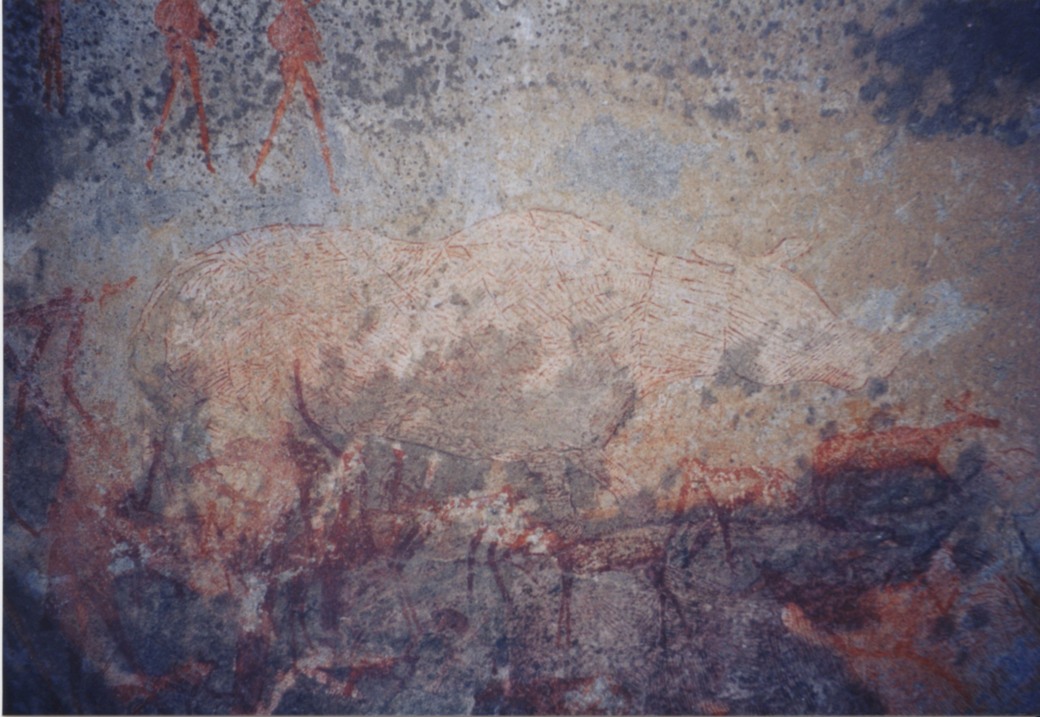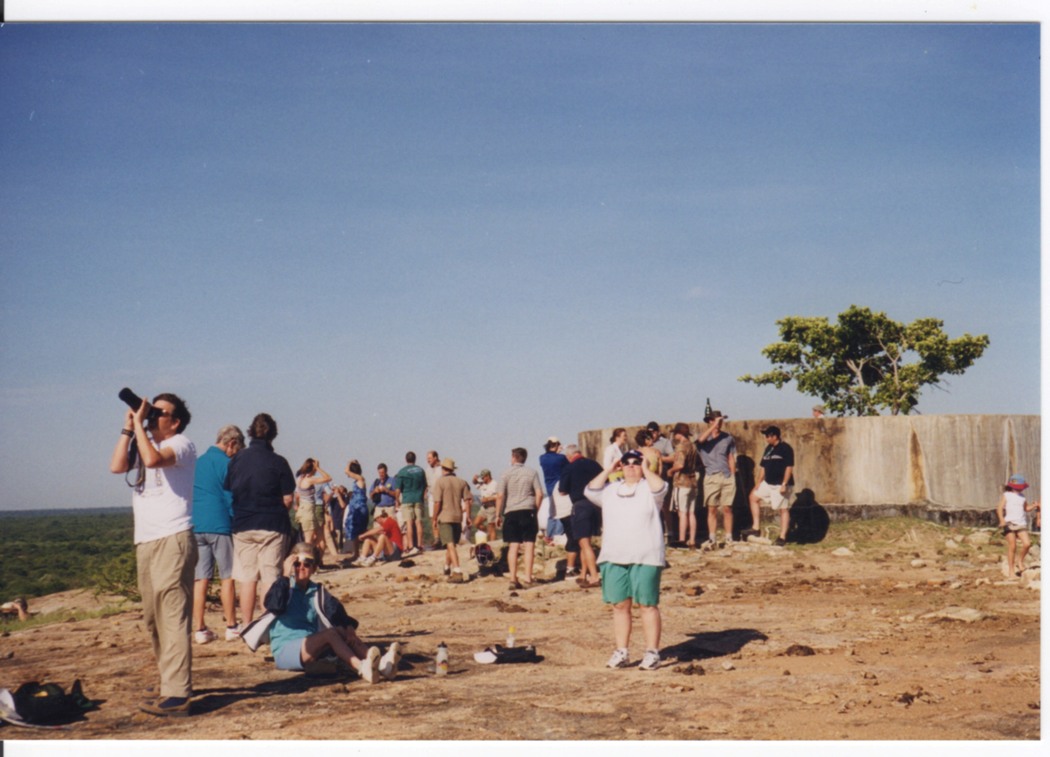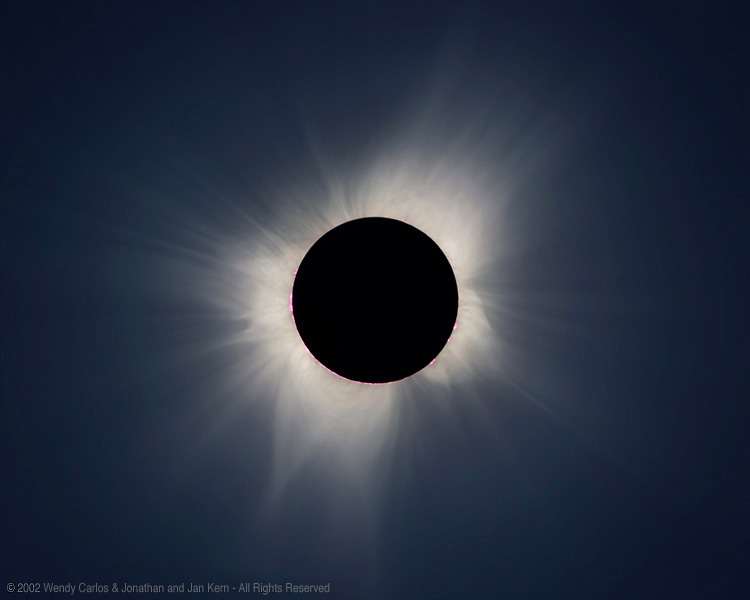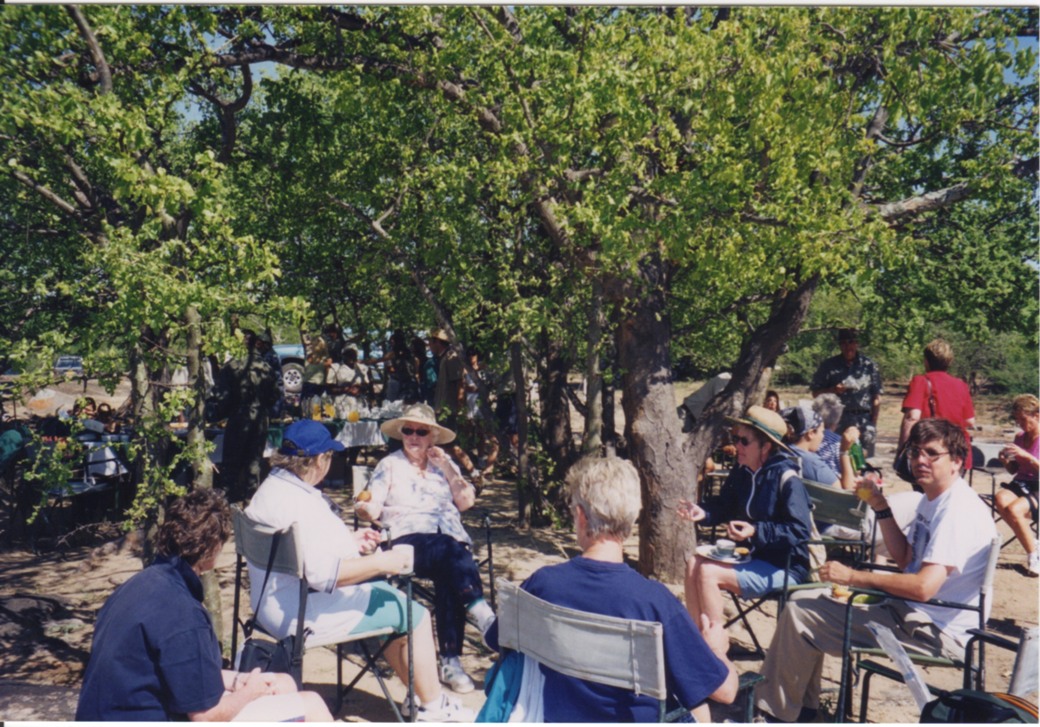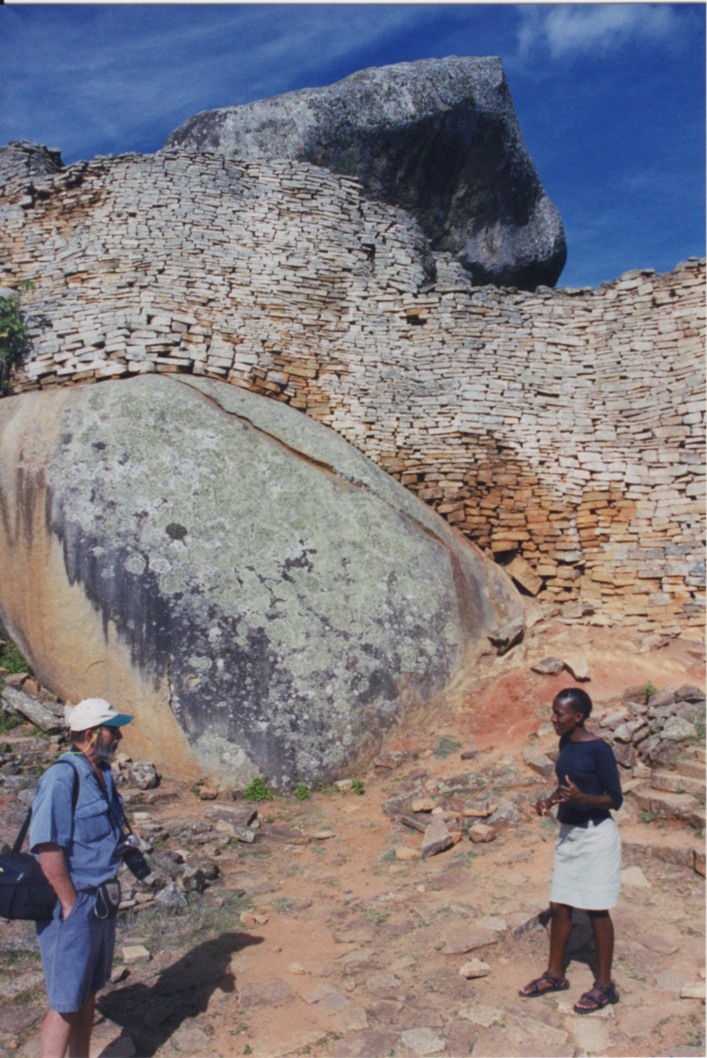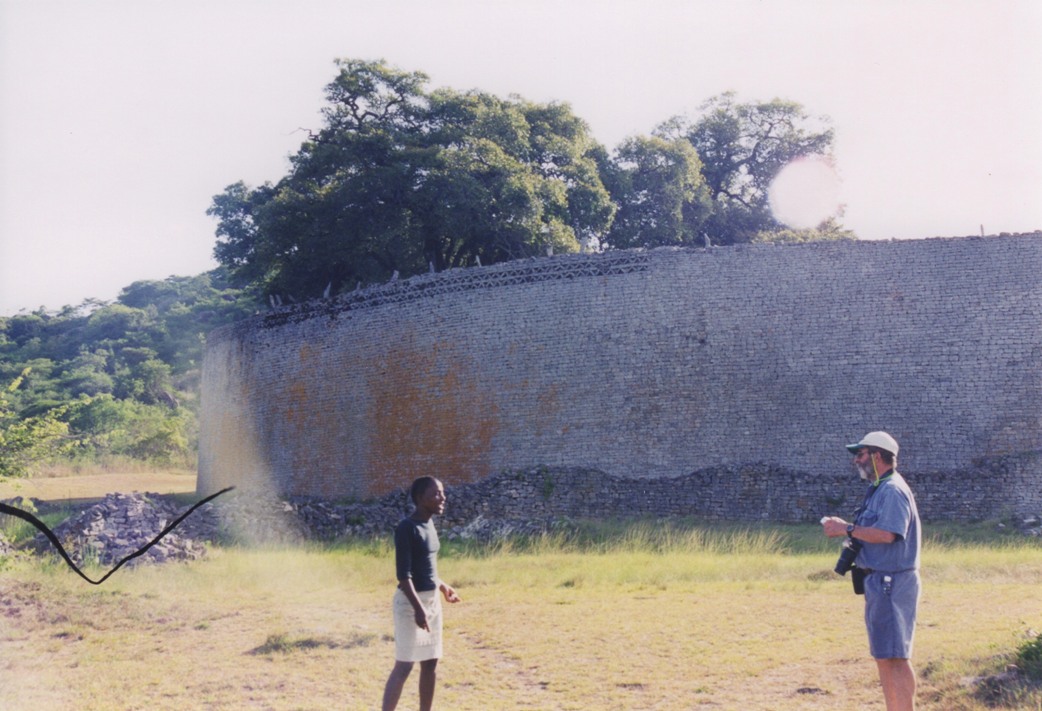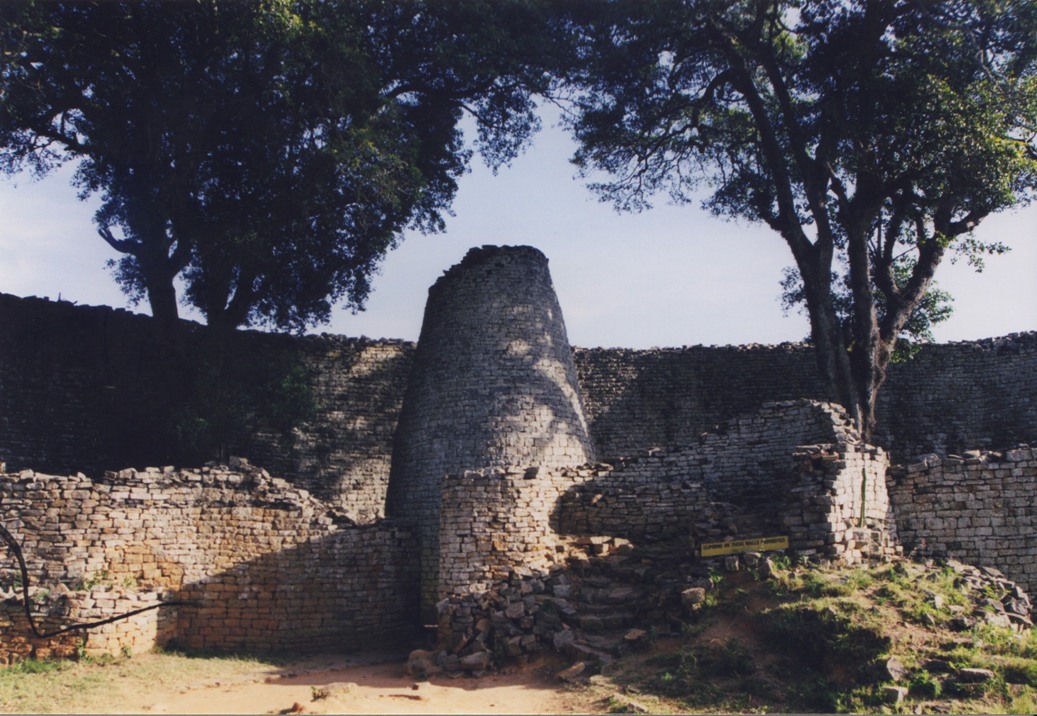 by Tony Crocker » Dec. 22, 2017 10:23 pm
by Tony Crocker » Dec. 22, 2017 10:23 pm
After my first total solar eclipse in 1999, I was naturally eager for more. The next two eclipses were in southern Africa, where
my friends Richard and Elda Weinstein had visited with rave reviews in 1998. We had schedule conflicts with the June 21, 2001 eclipse,
so I arranged 17 days with my ex-wife Becky in South Africa, Botswana and Zimbabwe for November - December, 2002. This report covers
the time in Zimbabwe including the eclipse on my birthday December 4.
On November 26 we flew into Victoria Falls from South Africa. Our first night was at Matetsi Water Lodge, which was all that Richard
had advertised as a perfect intro to “wild Africa.” Each guest cottage has a large bedroom (air-conditioned) and equally large bath,
with outside private dining and plunge pool overlooking the Zambezi. Dining area:
Matetsi's dusk game drive starts by boat, so we spent about 2 hours heading upriver on the Zambezi, diverting for close views of hippos
and crocs in the water and baboons, water buffalo and various birds on shore. Water buffalo herd:
-

A Range Rover met us just after sunset and did an hour night drive back to camp.
Matetsi’s business is very seasonal, concentrated in winter dry season. It was a ranch until 1982, then a hunting preserve until 1997,
and only since then a conservation area. But an advantage of our late spring trip was that for many animals spring is birth season.
Mother and baby warthog:
-

Mother and young giraffes:
-

We saw giraffes in all five game preserves we visited.
Sable Antelopes:
-
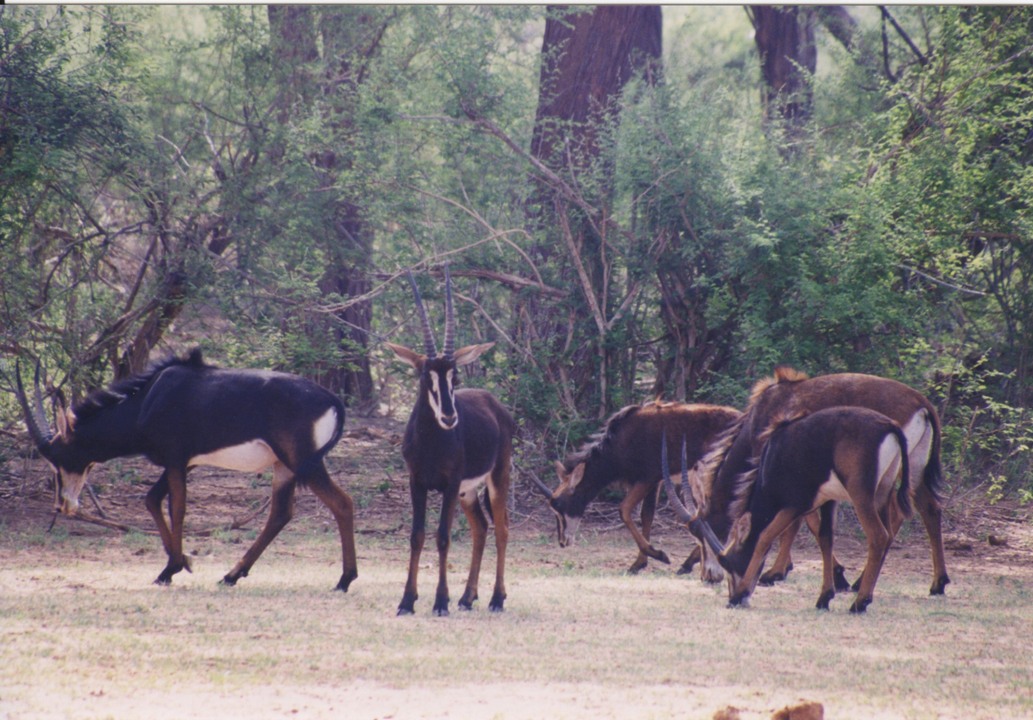
We then moved to the Kingdom Hotel in Victoria Falls, which we nicknamed “Las Vegas in Africa” for its ostentatious décor. It does have
the prime location, closest to both the rainforest walk and a curio mart where we bought a "Big Five" wood carving. At the curio mart we
discovered the black market exchange rate of $900 Zimbabwe to $1USD, as opposed to the official rate of 55 to 1 which would apply to
credit card transactions. Zimbabwe's economy under Mugabe had deteiorated substantially during the 18 months between the 2001 and 2002
eclipses. Later we had a Sundowner Zambezi cruise and Boma buffet, where you can try such items as warthog, ostrich, impala, kudu stew
and the infamous Mopani worms.
On November 28 I did the Zambezi whitewater rafting below Victoria Falls from the Zambian side. We started with a 10-minute walk down
to the Boiling Pot, a huge eddy. View upstream under the Victoria Falls bridge, which offers a 300+ foot bungy jump.
The Zambezi River was flowing about as low as it can at 12,000 cubic feet per second, which is similar to the Grand Canyon in summer.
We ran the first 21 named rapids. After #5 Stairway to Heaven the raft is 2/3 full of water even though it is self-bailing. With the
high volume and few obstacles, the Zambezi is not that technical, just a lot of fun, and the guides are a lot more casual than at home.
In some medium rapids we would all get in the back and get the raft to do “wheelies” in the wave train, and sometimes the raft would get
vertical or tip backwards. We did wear helmets, and there were several kayakers to pick up swimmers if necessary. #9 Commercial Suicide
shown here must be portaged, though a couple of the kayakers ran it.
In high water (mid-January to mid-July, minus the April complete closure) the portage of #9 is under water and rafting must start at #11. Some shade above
#11 was our lunch spot. I noticed an odd vertical branch a few feet in front of me and looked up to see that it was a monkey’s tail. If you
left a plate unattended a monkey would dash in and grab any leftovers.
First after lunch were #12A,B,C the 3 Ugly Sisters and #13 The Mother. Our raft flipped at the start of #13 and I made the error of hanging
on the raft with one hand and 2 paddles with the other. The river pulled me away from the raft so I swam most of #13 and was picked up by a
kayaker, then swam across a calm stretch to another raft while the kayaker went back for more of ours. Some Zambezi rapids:
#18 Oblivion is the last big rapid, where over half of rafts, including ours, flip over. The Zambian climb out after #21 is the toughest part
of the day, a very steep gorge, with rough-hewn branches secured to the ground (only about 1/4 of it with handrails) as steps. Your paddle
serves as a walking stick for balance while you also carry helmet and life jacket. It's about half an hour hike if you’re fast paced, with
one water cooler halfway up, but lots of water, soda and beer at the top. After 2 bottles up top I boarded the bus for a bumpy dirt road back.
Daytime late spring highs in Victoria Falls were about 95F but with low humidity as rainy season hadn't started yet. At the 3,000 foot altitude
it cooled to about 65F at night, and the Zambezi was about 75F. During winter peak safari season in July/August all of these temperatures are
about 20F lower so wetsuits are then needed for the rafting.
Becky did not raft but she shopped and exchanged $20US at the black market rate, which paid for our three course dinner with wine at the colonial era
Victoria Falls Hotel.
On our last morning we finally had time for the rainforest walk overlooking Victoria Falls. It opens at 6AM and we were probably the first ones there.
We made our way from the Livingstone statue through several overlooks to Danger Point. Western side of Victoria Falls:
Most of the rainforest walk has a frontal view of Victoria Falls across the gorge.
This spot had enough volume for us to get misted.
During high water you get soaked for most of the rainfoirest walk and there is so much spray that the falls are not visible. In that case Victoria
Falls is best viewed from the air.
By the center of the falls during low water, there are cascades only in sections.
Here I am at Danger Point, view toward dry Zambian side:
The escarpment is 30 feet higher on the Zambian side as the Zimbabwe side so much of the Zambian side is completely dry at low water flows. At maximum
flow Victoria Falls is a continuous fall 2 miles wide, 300+ feet tall and as much as 300,000 cfs with spray as high as 1,200 feet.
by 7:45AM the sun is high enough to form a rainbow in the mist.
After a few days in Botswana we returned to Zimbabwe on December 2, spending the next 3 nights at The Farmhouse in the Matobos Hills.
-
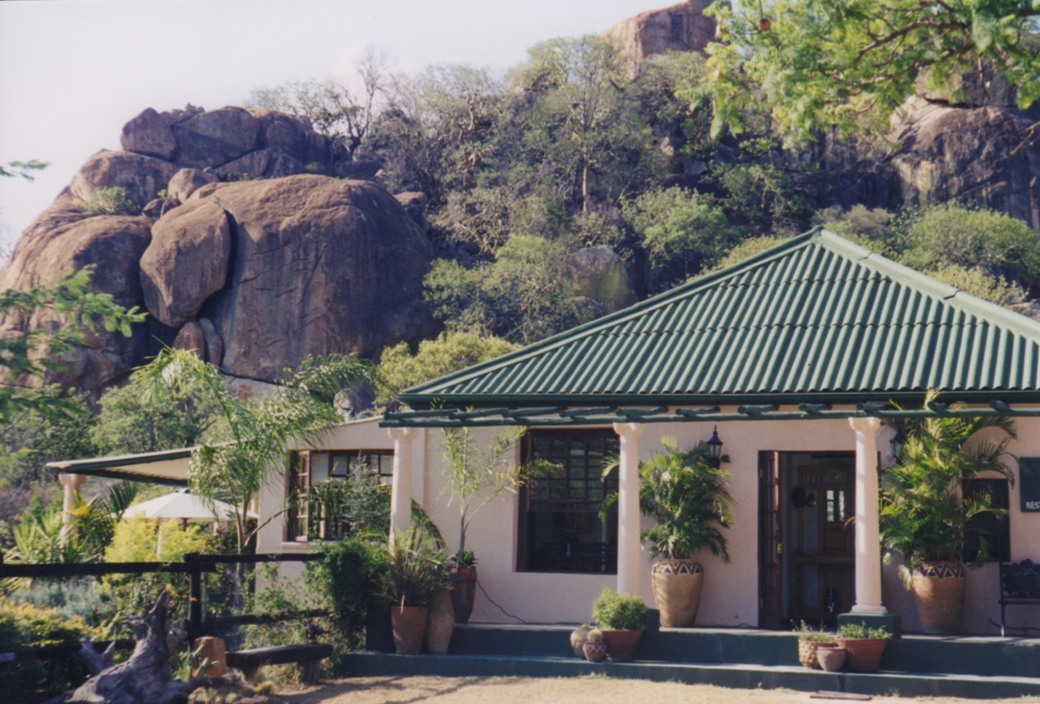
On December 3 we took a morning game drive into the Matobos park.
-

Peter Tiedt, the South Afican eclipse chase who organized this part of the trip, is in the back row of the Range Rover with two Danish guests
in the middle row and Becky in the cab. The Matobos are known for their unique rock formations. Here's another one of those.
-
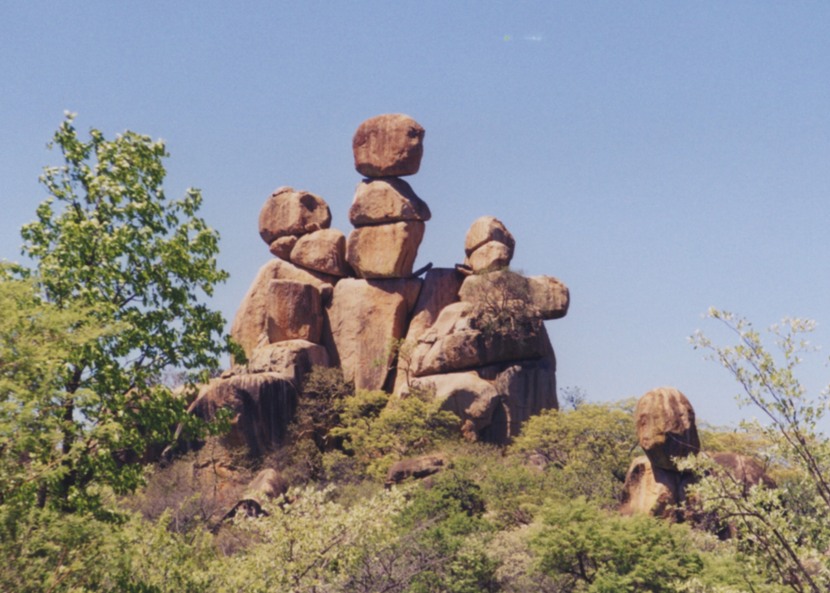
Finally we spotted our first rhino through some bushes. Most Zimbabwe rhino were relocated to the Matobos some years ago as they were being
poached from Zambia in the parks near the Zambezi. As this is a public park our vehicle was not allowed to go off road. But our guide Edmund
parked and let us walk into the bush to get a better view.
Final stop in the park was for refreshment at a stone hut overlook, memorial to a white soldier killed in action defending the Ian Smith regime.
The stone walls had many sunbathing geckos, gray females and rainbow colored males.
About 5PM Edmund led me and the Europeans on about an hour walk from the Farmhouse to some Bushman cave paintings and an overlook of the park.
The paintings are simple but remarkably well preserved considering they are over 5,000 years old.
The Farmhouse put on a great pre-eclipse barbecue dinner. Our favorite was the ostrich kebabs.
On December 4 we left at 6:00AM for the 40km drive south to the centerline eclipse viewing site near Kezi. The viewing site was selected by The Farmhouse
and nearby Camp Amalinda. Cars were parked and after-eclipse champagne brunch set up on a flat granite outcropping just off the Matobos road. With
his extensive scope, computer and camera gear Peter set up in this area. A higher rock outcropping with a water reservoir was accessible by 5 minute
hike through the bush. We opted to observe from this latter location, which had a 360 degree horizon view. With the umbra path moving NW to SE, we
observed from the NE side of the reservoir with about 20 people from the 2 resorts. Here we are viewing the partial eclipse.
For a 79 second total eclipse aound 8:00AM I took few pictures, all at fast exposure with no tripod. Deep partial:
Totality with a trace of red prominence visible at the bottom.
During the pre-digital era Wendy Carlos was IMHO the most skilled photographer at rendering a total solar eclipse with the most natural look.
This was perhaps the most impressive corona I saw until 2017. It is probably not coincidental that we were at about 4,500 feet in Zimbabwe, Jackson Hole
in 2017 was at 10,500 feet and most of my other eclipses were viewed not much above sea level. Views from aicraft are higher but those are through
windows. Post eclipse champagne brunch:
About 4:30 Edmund took me and the Europeans over to Cecil Rhodes’ grave for sunset.
Mugabe was worried about his security, so there were 5 government road checks on our morning drive December 5 from the Matobos to Great Zimbabwe.
At 3 of them the driving papers were checked and at one the police inspected some of our luggage. After lunch we had a guided tour of the Great
Zimbabwe Monument, the largest prehistoric structure in Africa south of Egypt. There were 2 major areas, the hilltop ruins first built around 1200
and the more well-known Great Enclosure built in the 1400’s. Both were constructed of stones without mortar, but the latter stones fit more closely,
as evidence than the Shona had acquired metalworking expertise in the interim. The hilltop walls blend into the natural granite outcroppings and
are often difficult to spot from below.
The Shona Kings lived on the hill, but the Great Enclosure was built for a First Lady. Outside Enclosure wall:
Inside Enclosure:
We later visited the local curio mart, which was nearly as extensive as at Victoria Falls but very quiet.
Due to Zimbabwe's 2002 politics and economics, Victoria Falls was the only place in the country that had many tourists. We heard later that even there
much of the tourism moved to the Zambian side over the next decade.
We left Zimbabwe on December 6, driving into South Africa for the last 4 days of our trip.
